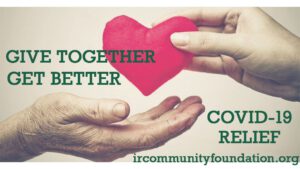Community Foundation Philanthropy Rises as COVID-19 Spreads

A recent article in the New York Times details the increase of donors using their donor advised funds to help charities and individuals affected by the Coronavirus pandemic. The article quotes several studies that have found a monumental increase in donations from community foundations in response to the recent pandemic.
Indian River Community Foundation has also increased funds distributed to local nonprofit organizations in a similar fashion. While most of these funds are sent directly to local charitable organizations serving vulnerable families and individuals, other funds are being sent to the United Way of IRC’s COVID-19 Community Response Fund.
The COVID-19 Community Response Fund has raised almost $1.5 million dollars, reached 27,000 households, and provided almost 2 million pounds of food. As of June 26th, the fund has distributed $1,139,500 to the following local nonprofits:
- 211
- The Buggy Bunch
- Camp Haven
- CareBag
- CareNet Pregnancy Center
- ChildCare Scholarships
- Children's Home Society
- Economic Opportunities Council
- Food Pantry of IRC
- For the Love of Paws
- Freedom Journey
- Gifford Youth Orchestra
- Gift Cards
- Halo No-Kill Rescue
- Heal the Healers
- Health Mart and Whole Family Pharmacy
- Healthy Start Coalition
- Hibiscus Children's Center
- Hope for Families Center
- Humane Society of IRC
- Moonshot Moment
- Prescriptions (TCCH, VNA, Whole Family, CCIRC)
- RCMA
- Salvation Army of IRC
- Senior Resource Association
- St. Helens/ UP
- The Source
- TC Food Bank
- TC Homeless Services Council
- Treasure Coast Food Bank
- Tykes and Teens
- United Against Poverty
- Veteran's Council of IRC
If You Have Not Done So Already, Here’s How You Can Help
- Make 2020 charitable distributions from donor advised funds to local charities now.
- Make a gift to the United Way’s COVID-19 Community Response Fund now.
- Make a significant gift to save or sustain a specific charitable organization, especially one serving vulnerable individuals and families.
Please click here to read the entire New York Times article (PDF version)